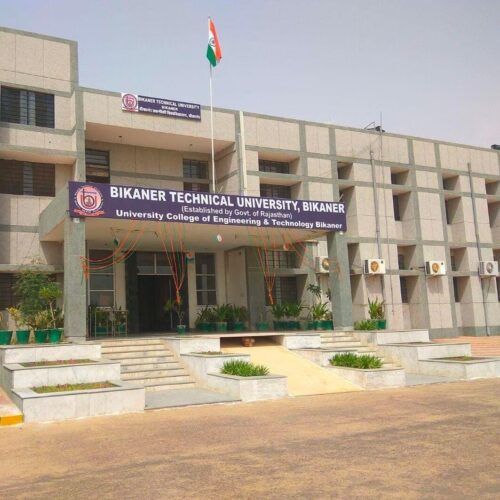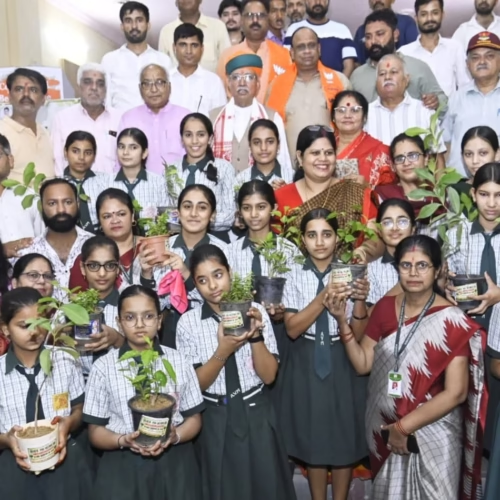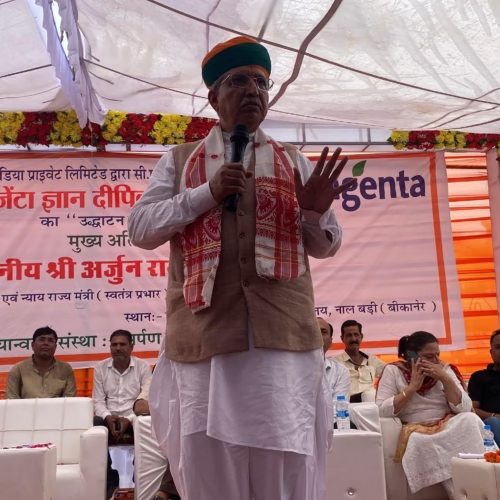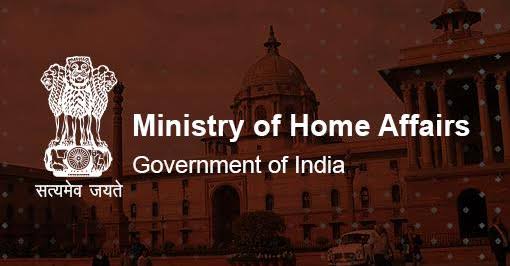By Defence Journalist Sahil
Historic Mock Drill Across Rajasthan After 54 Years
Simulated War-Like Emergency to Empower Civil Preparedness
In a landmark move to bolster internal security and public preparedness, Rajasthan on Wednesday witnessed a state-level mock drill of unprecedented scale — the first of its kind in 54 years. The exercise aimed at simulating a war-like emergency is being carried out simultaneously across 28 major cities, drawing the attention of the nation towards the renewed emphasis on civil defence mechanisms and strategic awareness among the population.
The drill, ordered by the state government and coordinated through the Chief Secretary’s office, is designed not just as an administrative exercise but as a symbolic alert to rising global and regional tensions. From Jaipur to Bikaner and from Udaipur to Jodhpur, urban and semi-urban populations participated in a planned blackout, responding to sirens that replicated air raid warnings. The idea was simple yet powerful — to prepare ordinary citizens for extraordinary times.
Such an initiative holds particular significance in the current geopolitical context. With heightened activity on both the western and northern frontiers of India, and with persistent threats of asymmetric warfare and cross-border misadventures, the role of civil defence has expanded beyond bunkers and sirens. It now includes community readiness, psychological resilience, and an informed public that knows how to act swiftly and calmly under pressure.
The event also served as a bridge between history and present-day strategy. India has previously conducted civil defence drills in the aftermath of major conflicts — the 1962 war with China, the 1965 and 1971 wars with Pakistan — but since then, decades of relative peace and technological distractions have dulled public sensitivity towards real-time threats. Rajasthan’s move is, therefore, both a remembrance and a reminder — a way to awaken that dormant vigilance among the people.
While the execution involved coordination between district administrations, police units, and disaster response teams, the heart of the drill was the participation of citizens themselves. They were asked to switch off all lights, stop vehicle movements temporarily, and even assist in simulated first-aid and casualty response protocols. The collective compliance underscored not just the success of the drill but the trust that citizens place in public safety initiatives.
Experts in defence and strategic affairs have praised this mock drill as a timely and much-needed measure. In a world where threats are no longer just conventional but hybrid — involving drones, cyber-attacks, and psychological warfare — the ability of a civilian population to respond swiftly can be a decisive factor in national resilience. Rajasthan’s drill might now set a precedent for other states to follow, especially those sharing international borders.
What was notable, too, was the messaging around this drill. The government ensured that there was no room for panic or misinformation. Well before the drill, public awareness campaigns were launched, advisories were issued, and local leaders were roped in to reassure citizens. It wasn’t just a drill; it was a mass rehearsal in discipline, awareness, and unity in the face of crisis.
In the days to come, the impact of this exercise will be evaluated in terms of data, feedback, and system audits. But beyond the numbers, the real outcome lies in the minds of the people — a renewed sense of preparedness, a shared understanding of responsibility, and a collective consciousness that India is ready, not just militarily but mentally, to face any challenge that may arise.
54 वर्षों बाद राजस्थान में ऐतिहासिक मॉक ड्रिल
आपातकालीन युद्ध जैसी स्थिति की तैयारी के लिए सामूहिक चेतना का जागरण
राजस्थान ने बुधवार को इतिहास रच दिया। 54 वर्षों बाद पूरे राज्य में एक ऐसा मॉक ड्रिल आयोजित हुआ जो ना केवल इसके व्यापक स्तर के लिए उल्लेखनीय है, बल्कि इस बात का प्रतीक भी है कि आम नागरिक अब देश की सुरक्षा व्यवस्था का अभिन्न अंग बन चुके हैं। यह अभ्यास युद्ध जैसी आपात स्थिति की कल्पना पर आधारित था, लेकिन इसका उद्देश्य भय फैलाना नहीं बल्कि जागरूकता और तैयारी को स्थापित करना था।
यह अभ्यास सिर्फ एक प्रशासनिक औपचारिकता नहीं था, बल्कि एक सामाजिक प्रयोग था—एक ऐसा प्रयास जो हर शहर, हर गली, और हर घर तक गया। जयपुर से लेकर बीकानेर, जोधपुर से उदयपुर तक 28 शहरों में एक साथ ब्लैकआउट किया गया, सायरन बजे, वाहन रुके, लाइटें बंद हुईं, और नागरिकों ने बिना अफरा-तफरी मचाए एक अनुशासित अभ्यास में भाग लिया।
आज की वैश्विक परिस्थितियां यह संकेत दे रही हैं कि युद्ध अब केवल सीमा पर नहीं लड़ा जाता। यह मानसिक, साइबर, और सामरिक स्तर पर होता है। ऐसे में यह मॉक ड्रिल एक चेतावनी है, एक तैयारी है, और एक सामाजिक उत्तरदायित्व भी है। सीमावर्ती राज्य होने के नाते राजस्थान की भूमिका और भी महत्वपूर्ण हो जाती है।
ऐसा अभ्यास पहले 1962 के चीन युद्ध, 1965 और 1971 के पाकिस्तान युद्ध के दौरान हुआ था, लेकिन तब की पीढ़ी और आज के नागरिकों के बीच कई अंतर हैं। नई पीढ़ी युद्ध की भयावहता से अनभिज्ञ है। इसलिए यह अभ्यास केवल तकनीकी नहीं, बल्कि भावनात्मक और मानसिक स्तर पर भी उन्हें जोड़ने का माध्यम है।
ड्रिल की सबसे बड़ी उपलब्धि यह रही कि आम जनता ने इसे गंभीरता से लिया। लोगों ने निर्देशों का पालन किया, घरों की लाइट बंद की, वाहन रोके, और कुछ स्थानों पर प्राथमिक चिकित्सा की झलक भी देखने को मिली। यह स्पष्ट संकेत है कि यदि जानकारी और दिशा हो, तो भारत का नागरिक हर परिस्थिति का डटकर सामना कर सकता है।
रक्षा विशेषज्ञों ने इस ड्रिल को समय की मांग बताया है। आज जब दुश्मन पारंपरिक तरीके से नहीं बल्कि ड्रोन, साइबर अटैक और मनोवैज्ञानिक युद्ध के रूप में सामने आ रहा है, तब नागरिकों का सजग और प्रशिक्षित होना उतना ही महत्वपूर्ण हो गया है जितना कि सेना का सशक्त होना।
सरकार ने इस अभ्यास को लेकर संदेश देने में कोई कमी नहीं छोड़ी। सोशल मीडिया से लेकर पारंपरिक माध्यमों तक सूचना फैलाई गई, नेताओं ने स्थानीय स्तर पर संवाद स्थापित किया और हर नागरिक को भरोसा दिलाया कि यह एक अभ्यास है, न कि वास्तविक आपात स्थिति।
आगामी दिनों में इसके प्रभाव का आकलन आंकड़ों और रिपोर्टों के जरिए किया जाएगा, लेकिन असली सफलता लोगों की मानसिकता में झलकेगी—एक नई जागरूकता, एक साझा ज़िम्मेदारी और यह भरोसा कि जब देश पुकारेगा, तो हर नागरिक तैयार मिलेगा, बिना घबराहट, बिना भ्रम के।
















Add Comment